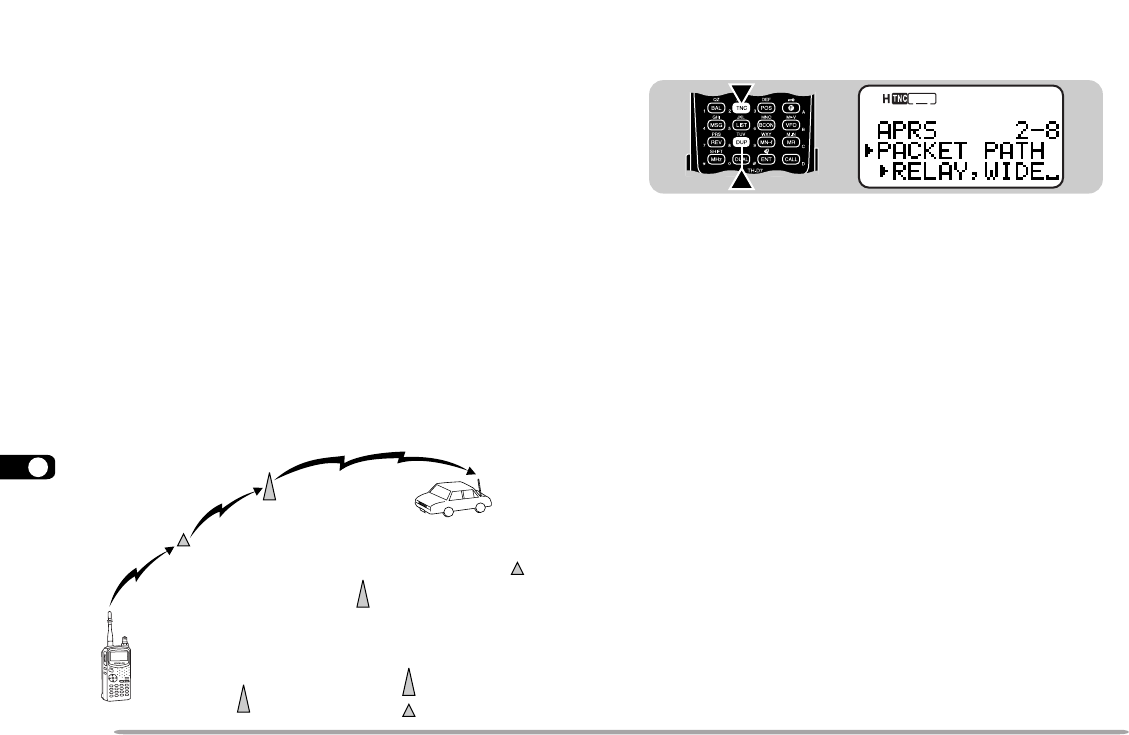
1
2
3
4
5
6
7
8
9
10
11
12
13
14
15
16
17
18
19
20
21
22
23
72
PROGRAMMING A PACKET PATH
A packet path specifies how APRS data should be
transferred via one or more repeaters. A repeater, which
is used for packet transfer, is commonly called a
digipeater. This came from a digital repeater. A
digipeater is usually located on a mountain top or high
building. Unlike a voice repeater, it operates on a
simplex frequency. Each volunteer who installs a
digipeater declares his (or her) digipeater to be a “wide”
type or “relay” type. Generally a wide-type digipeater
transmits packets over much greater distances than a
relay-type one.
The APRS supports various methods for specifying a
packet path. Some of those methods are described on
the next page. This transceiver allows you to edit a path
using a maximum of 32 alphanumeric characters. The
default is “RELAY,WIDE” that is one of the common
settings. A comma must be put between each
parameter.
Note: This transceiver is incapable of functioning as a digipeater.
1 Press [MENU] to enter Menu mode.
2 Press [2], [8] to select “2–8 (PACKET PATH)”.
• The display for entering characters appears; the first
digit blinks.
3 Press [UP]/ [DWN] to select a character.
• You can enter 0 to 9, A to Z, , (comma), and –.
4 Press [OK].
• The cursor moves to the next digit.
5 Repeat steps 3 and 4 to enter up to 32 digits.
• Pressing [OK] after selecting the 32nd digit completes
the programming.
• To complete programming after entering less than 32
digits, press [OK] twice.
• Each press of [ESC] causes the cursor to move
backward.
• Pressing [A/B] deletes the digit at which the cursor is
blinking.
6 Press [MENU] to exit Menu mode.
You can also use the keypad to enter alphanumeric
characters in step 3. For example, each press of [TNC]
switches entry as A, B, C, then 2. Press [ENT] to switch
between , and –.
Wide-type
Relay-type
STSTA
CONCON
96
BCONBCON
DUP
9
7
5


















